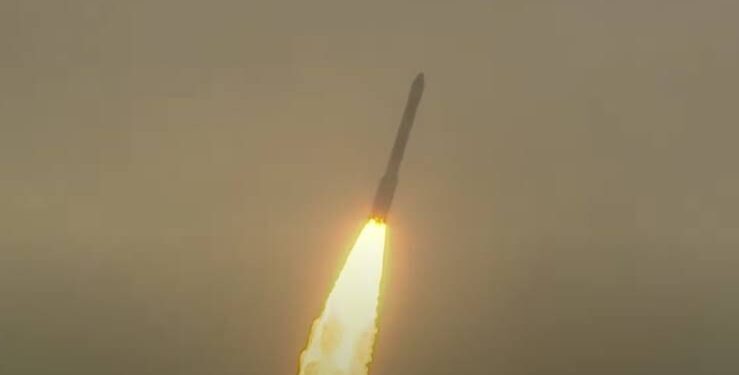India’s ambitious Earth observation mission, EOS-09, encountered a major setback on Sunday morning as the Indian Space Research Organisation (ISRO) confirmed the satellite failed to reach its intended orbit.
Launched aboard the PSLV-C61 rocket from the Satish Dhawan Space Centre in Sriharikota at 5:59 AM IST, the mission marked ISRO’s 101st satellite launch. The launch vehicle performed normally through its first and second stages, but an anomaly in the third stage halted the mission’s success.
In a statement on X (formerly Twitter), ISRO said:
“Today 101st launch was attempted. PSLV-C61 performance was normal till the 2nd stage. Due to an observation in the 3rd stage, the mission could not be accomplished.”
ISRO Chairman V Narayanan elaborated, “The third stage motor ignited successfully, but an issue occurred mid-operation. A detailed analysis will be conducted to identify the root cause.”
EOS-09 was designed as a state-of-the-art Earth observation satellite equipped with C-band synthetic aperture radar. This technology allows 24/7 imaging capabilities—unaffected by clouds, darkness, or poor weather—making it a critical asset for surveillance, disaster management, and environmental monitoring.
The satellite was meant to join a constellation of remote sensing satellites and provide continuous data to aid agriculture, forestry, strategic border monitoring, and more. It also featured deorbiting fuel for safe disposal post-mission and planned use of Orbit Change Thrusters (OCT) for responsible space operations.
EOS-09 followed EOS-04, launched in 2022, and was expected to significantly improve India’s Earth-monitoring capabilities.
-
Weight: 1,696.24 kg
-
Height: 44.5 meters
-
Configuration: 27th flight in the XL (extra-large) variant, tailored for heavier payloads
-
Purpose: To place EOS-09 into a Sun-Synchronous Polar Orbit (SSPO)
The mission’s failure comes despite a smooth early flight and just weeks after ISRO was praised for its enhanced use of satellites to support national security. As EOS-09 now joins a list of attempted—but unsuccessful—missions, the setback serves as a reminder of the challenges in space exploration, even for experienced space agencies.




















